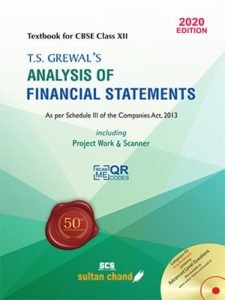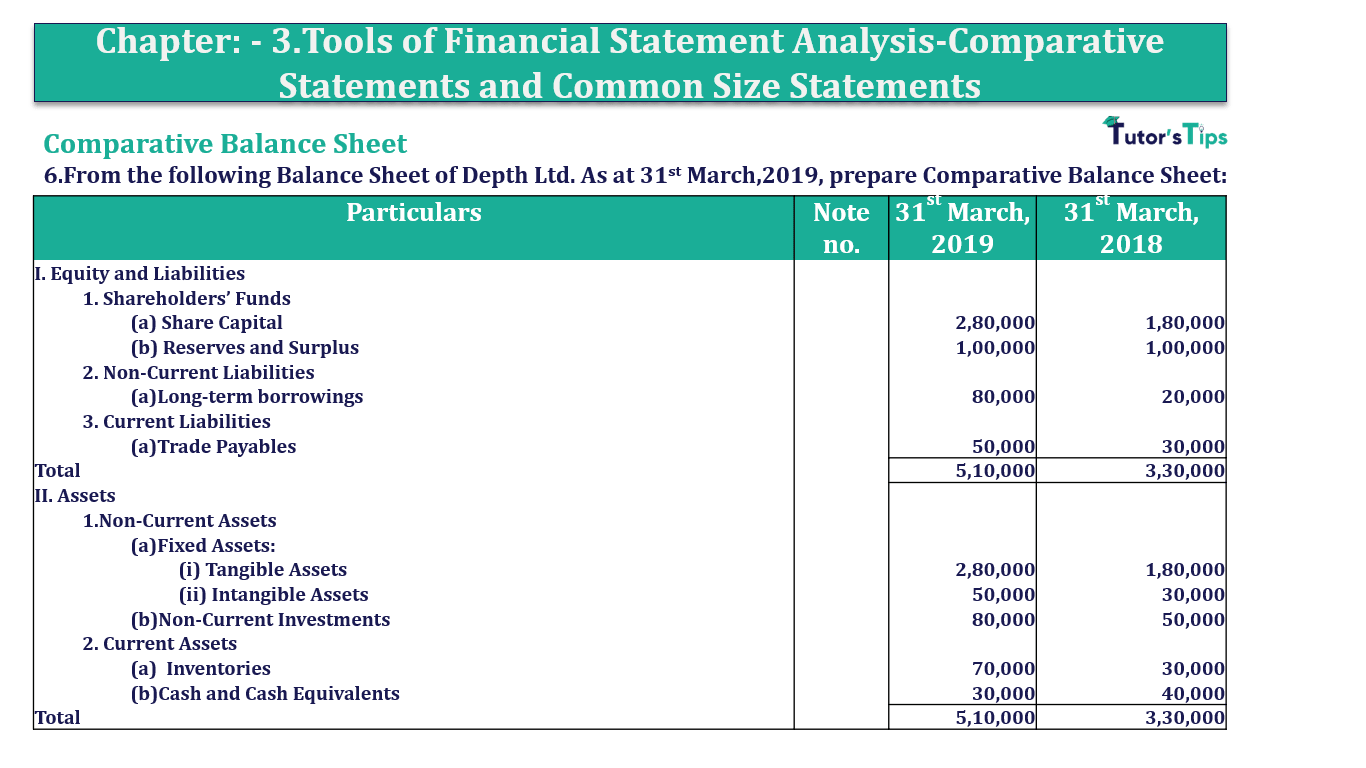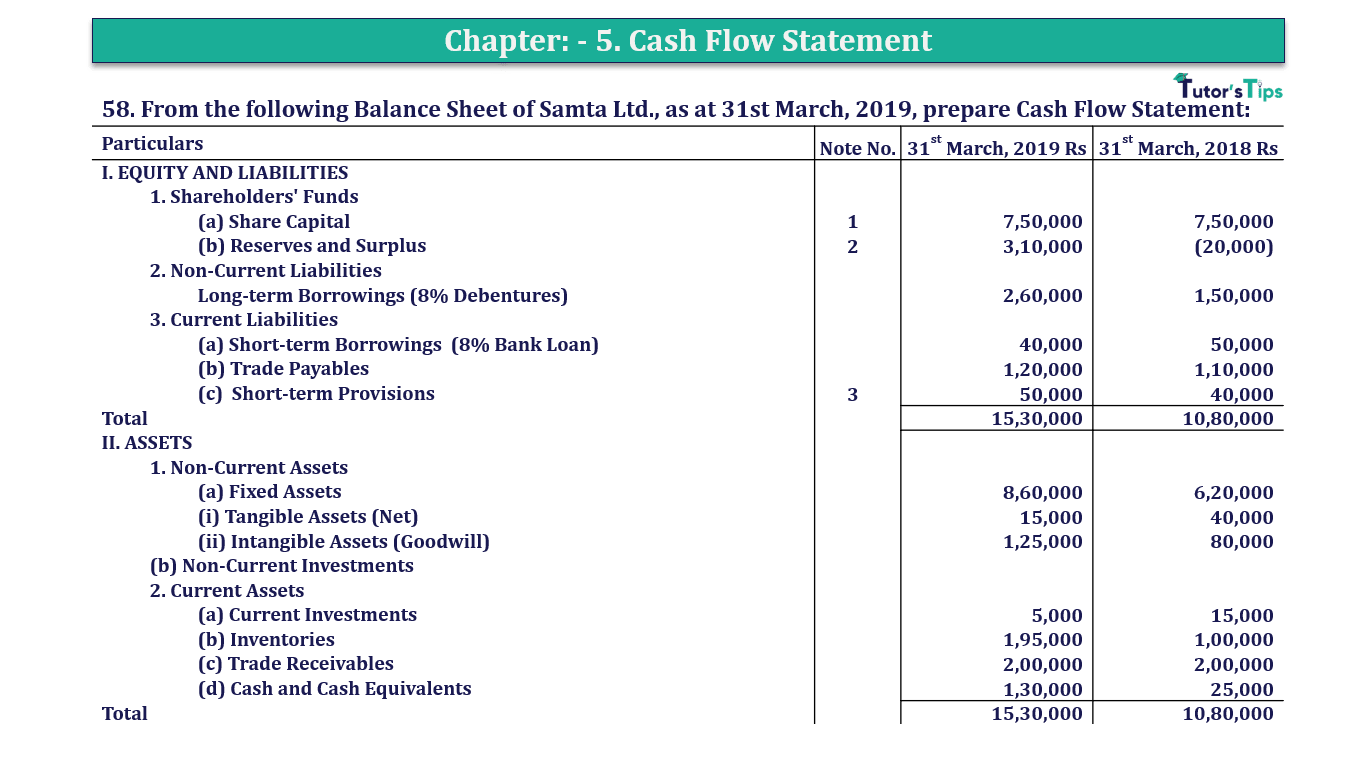Question 40 Chapter 4 of +2-B
Table of Contents
Debt to Equity Ratio
40. Calculate Debt to Equity Ratio from the following information:
| Rs. | Rs. | ||
| Fixed Assets (Gross) | 8,40,000 | Current Assets | 3,50,000 |
| Accumulated Depreciation | 1,40,000 | Current Liabilities | 2,80,000 |
| Non-current Investments | 14,000 | 10% Long-term borrowings | 4,20,000 |
| Long-term loans and Advances | 56,000 | Long-term Provision | 1,40,000 |
Calculate ratios indicating the Long-term and the Short-term financial position of the company.
The solution of Question 40 Chapter 4 of +2-B: –
| Equity | = | Total Assets – Total Debts |
| = | (8,40,000 – 1,40,000) + 14,000 + 56,000 + 3,50,000 – (4,20,000 + 1,40,000 + 2,80,000) | |
| Equity | = | Rs. 2,80,000 |
| Debt | = | Long-Term Borrowings + Long-Term Provisions |
| = | Rs. 4,20,000 + Rs. 1,40,000 | |
| Debt | = | Rs. 5,60,000 |
| Debt to Equity Ratio | = | Debts | = | Rs.5,60,000 |
| Equity | Rs.2,80,000 | |||
| = | 2: 1 |
Balance Sheet: Meaning, Format & Examples
Thanks, Please Like and share with your friends
Comment if you have any question.
Also, Check out the solved question of previous Chapters: –
T.S. Grewal’s Double Entry Book Keeping +2 (Vol. I: Accounting for Not-for-Profit Organizations and Partnership Firms)
- Chapter No. 1 – Financial Statement of Not-For-Profit Organisations
- Chapter No. 2 – Accounting for Partnership Firms – Fundamentals
- Chapter No. 3 – Goodwill: Nature and Valuation
- Chapter No. 4 – Change in Profit-Sharing Ratio Among the Existing Partners
- Chapter No. 5 – Admission of a Partner
- Chapter No. 6 – Retirement/Death of a Partner
- Chapter No. 7 – Dissolution of a Partnership Firm
T.S. Grewal’s Double Entry Book Keeping (Vol. II: Accounting for Companies)
- Chapter No. 8 – Company Accounts – Accounting for Share Capital
- Chapter No. 9 – Company Accounts – Issue of Debentures
- Chapter No. 10 – Redemption of Debentures
T.S. Grewal’s Double Entry Book Keeping (Vol. II: Accounting for Companies)
- Chapter No. 1 – Financial Statements of a Company
- Chapter No. 2 – Financial Statement Analysis
- Chapter No. 3 – Tools of Financial Statement Analysis – Comparative Statements and Common- Size Statements
- Chapter No. 4 – Accounting Ratios
- Chapter No. 5 – Cash Flow Statement
Check out T.S. Grewal +2 Book 2020@ Official Website of Sultan Chand Publication
Advertisement-X








Leave a Reply